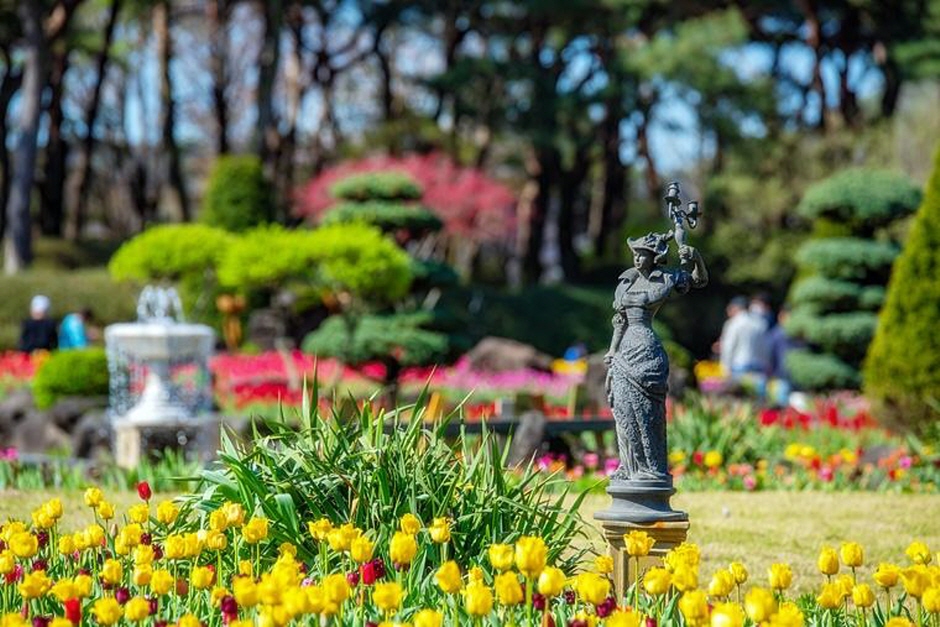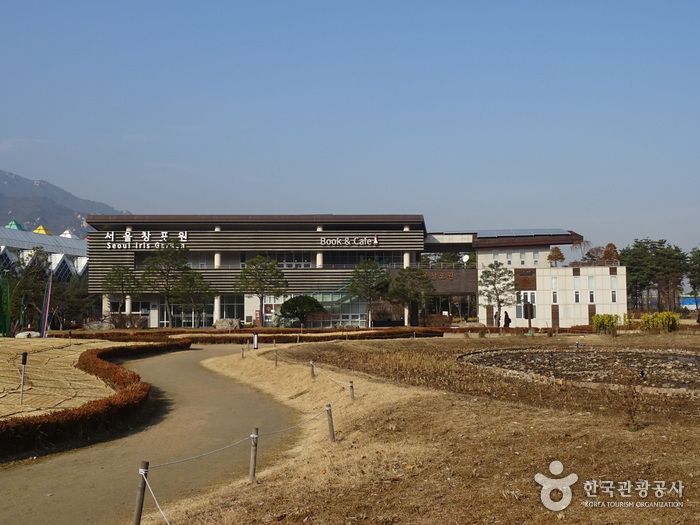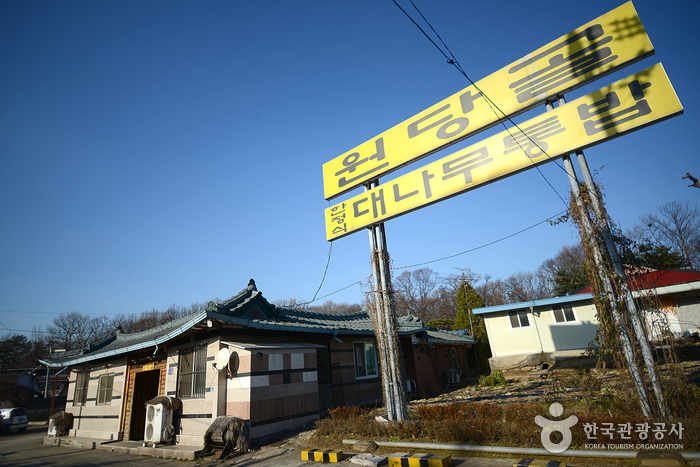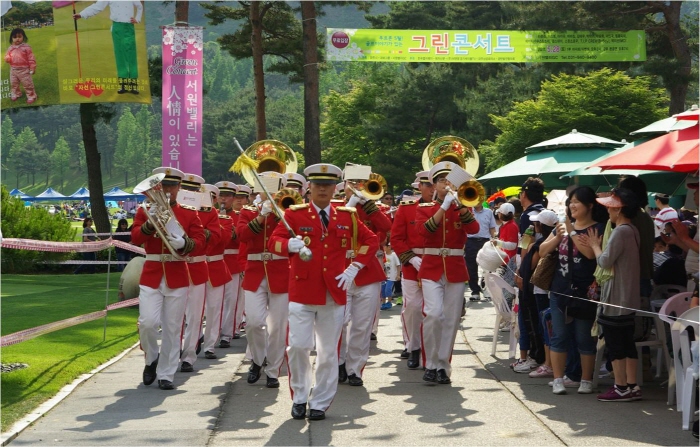Seoul Doseonsa Temple (도선사(서울))
9.7Km 2025-06-25
504 Samyang-ro 173-gil, Gangbuk-gu, Seoul
Doseonsa Temple was established 1,100 years ago during the latter part of the Silla Kingdom when the renowned Buddhist priest Doseonguksa was traveling through the mountains. After visiting the site, Doseonguksa made a prophecy that led to the construction of the temple. According to legend, he used only his walking stick to carve the large Bodhisattva that sits at the temple. Interestingly enough, the statue does not show any evidence of chisel marks, further adding to the mystery of how the statue was made.
During the 7th year of King Gwangmu of the Joseon dynasty, Doseonsa Temple was officially named the representative temple of Korea with the purpose of promoting Cheongdamdaejongsa's Korean Buddhism movement, aiming at a religious revival. Due to these special circumstances Deseonsa Temple gained a high reputation and much recognition, which have held strong to this day.
Inside the temple, visitors can view the remains and written works of Cheongdamdaejongsa in the Cheongdamdaejongsa Memorial Hall. Next to the road leading to Cheonbuljeon Hall is a pond where you can toss a coin and make a wish and just past Yongammun Gate is a hiking path connecting Baegundae Cliff and Insubong Peak. Inside the Ksitigarbha Hall are portraits of President Park Chung-hee, Yuk Yeong-su, and Hyundai Chairman Chung Ju-yung. In front of the hall is a tree that is said to have been planted by a Buddhist priest who brought it from India 200 years ago. Historical artifacts can be found throughout the temple.
[Seoul Trail Course 1] Suraksan · Buramsan Mountain Course ([서울 둘레길 1코스] 수락 · 불암산 코스)
9.9Km 2025-01-06
Junggye-dong, Nowon-gu, Seoul, Republic of Korea
Seoul Trail is a walking trail that encompasses the entire city of Seoul, with a total length of 157km and 8 courses. It weaves together the history, culture, and natural ecology of Seoul through various stories. The 1st course is a gentle path from Suraksan Mountain to Buramsan Mountain, covering 18.6km and taking approximately 8 hours and 10 minutes. This trekking course around Buramsan Mountain passes through Iris Garden, Deongneung-gogae, Information Center, Taereung Royal Tomb, Suamsa Temple, and Hakdoam Temple.
Bukhansanseong Fortress (북한산성)
10.0Km 2020-03-26
375, Daeseomun-gil, Deogyang-gu, Goyang-si, Gyeonggi-do
+82-31-968-5325
First built in 132 during the Baekje era (18 BC-AD 660) under King Gaeru's reign, Bukhansanseong Fortress was the northernmost fortress that protected Baekje from Goguryeo's forces. In the year 475, the fortress fell in the hands of Gogyuryeo after a fierce battle. As a result, King Gaeru was killed and Baekje's princess fled to Ungjinseong Fortress. Despite the fortress' collapse and reconstructions, Bukhansanseong Fortress continued to play an important role in protecting the capital city throughout Korea's history of war.
Byukchoji Gardens (벽초지수목원)
10.0Km 2024-10-28
242 Buheung-ro, Gwangtan-myeon, Paju-si, Gyeonggi-do
+82-31-957-2004
Byukchoji Gardens is made up of a Korean-style and a European-style garden. It is home to nearly 1,400 species of plants. Each garden is organized under a single theme, such as mythology, adventure, and freedom. Byukchoji Gardens also features walking trails, ponds, greenhouses, and lawns. Byukchoji Pond has a Lotus Flower Garden with lotus flowers blooming. Visitors can walk on the trails built above the pond to examine the flowers up close. Nearby tourist sites include Bakdalsan Mountain, Paju Book City, and the Paju Samneung Cluster, a UNESCO World Heritage site.
Seoul Iris Garden (서울창포원)
10.0Km 2020-08-24
916, Madeul-ro, Dobong-gu, Seoul
+82-2-954-0031
Seoul Iris Garden is located between Dobongsan and Suraksan mountains in northern Seoul. The garden, measuring 52,417 ㎡, boasts a wide array of irises and other plants in 12 different themed zones including Iris Garden, Medicinal Plant Garden, and Wetland Park.
At the Iris Garden, 300,000 irises in 130 species are on display on a plot of land measuring 15,000 ㎡. Species include yellow iris, iris setosa, iris pallasii, and iris domestica, each boasting its own brilliant colors and delicate shape. The Medicinal Plant Garden is home to 130,000 plants in 70 different species of medicinal plants, allowing visitors to view the largest selection of medicinal herbs in the country. Wetland Park presents 70,000 wetland plants and houses an observatory deck from which visitors may view and learn about the diverse aquatic plants.
Cheoni Observatory within the garden provides visitors with a place take to in the beautiful scenery from above. The nearby forest lounge is a rest area for visitors as well as a center of operations for the park’s ecological education programs. Irises are in bloom from May to June of every year, but are even a sight to behold during the rest of the warmer months, given the delicate shape of their leaves.
Wondanggol Chueotang (원당골추어탕)
10.1Km 2024-02-20
1445-12 Goyang-daero, Deogyang-gu, Goyang-si, Gyeonggi-do
031-963-0820
Wondanggol Chueotang is a restaurant known for its diverse loach dishes. Their primary specialties are chueotang (loach soup) and tongchueotang (whole loach soup), prepared through distinct methods. Chueotang (loach soup) involves boiling and grinding the loaches, while tongchueotang (whole loach soup) is prepared by boiling the loaches whole. If you order dolsotbap (hot stone pot rice), you'll also get deliciously cooked rice in the hot stone pot, along with nurungji (scorched rice).
Olive Young - Samsong Station Branch [Tax Refund Shop] (올리브영 삼송역)
10.2Km 2024-04-19
69, Dongsong-ro, Deogyang-gu, Goyang-si, Gyeonggi-do
-
Iriru Boutique hanok guest house [Korea Quality]이리루 한옥부틱게스트하우스[한국관광 품질인증]
10.3Km 2023-05-23
11-44, Yeonseo-ro 50-gil, Eunpyeong-gu, Seoul
+82-504-0904-2606
Iriru is a boutique hanok guest house in Eunpyeong Hanok Village, Eunpyeong-gu, Seoul. It’s a space where sustainable materials such as red clay, white clay and hemp, plus traditional construction methods - wood build and joinery - combine to make a comfortable and healthy living space. Guestrooms range from two-person up to six-person rooms, and guests can soak themselves in wooden hinoki bathtubs. An experience program is offered, including meditation and a tea ceremony.
Seowon Valley Green Concert (서원밸리 그린콘서트)
10.3Km 2022-05-30
333, Seowon-gil, Paju-si, Gyeonggi-do
• 1330 Travel Hotline: +82-2-1330 (Korean, English, Japanese, Chinese) • For more info: +82-31-940-9400
Seowon Valley Green Concert is a social awareness event that aims to create a company culture that restores society through the business profits. They also hope to improve the lives of people lacking in the area through the sponsorship of members and events, as well as using the popularization of golf to create a cultural space that can be used by both general citizens as well as golf club members.
Kansong House (간송옛집)
10.3Km 2025-04-01
149-18 Sirubong-ro, Dobong-gu, Seoul
The 100-year-old traditional hanok Kansong House sits by the burial mound of Kansong Jeon Hyeong-pil (1906-1962), who played a significant role in preserving the cultural heritages of Korea during the Japanese colonial period. This house was orginally built by Kansong's adoptive father Jeon Myeong-gi (1870-1919) to us as a storage facilities for harvested agriculture from the northern Gyeonggi-do and Hwanghae. After his father's death, Kansong used the house as a ritual house for his father and often stayed here. Some damages were done to the house during the Korean War, and partial repair was made after his death.

![[Seoul Trail Course 1] Suraksan · Buramsan Mountain Course ([서울 둘레길 1코스] 수락 · 불암산 코스)](http://tong.visitkorea.or.kr/cms/resource/16/2658216_image2_1.jpg)



![Olive Young - Samsong Station Branch [Tax Refund Shop] (올리브영 삼송역)](http://tong.visitkorea.or.kr/cms/resource/09/2888309_image2_1.jpg)


 English
English
 한국어
한국어 日本語
日本語 中文(简体)
中文(简体) Deutsch
Deutsch Français
Français Español
Español Русский
Русский